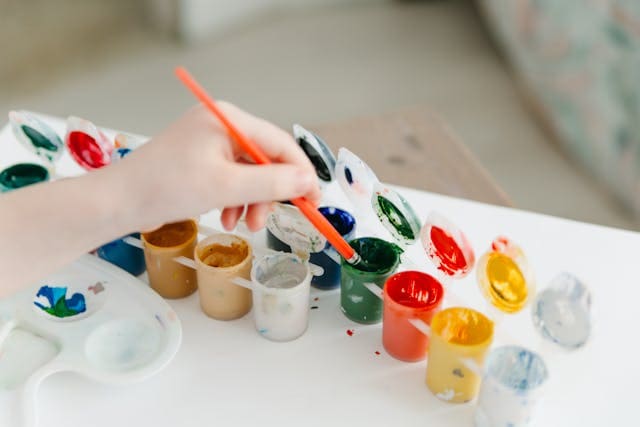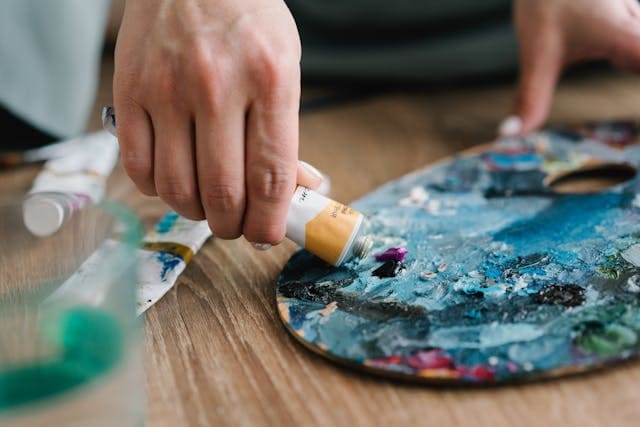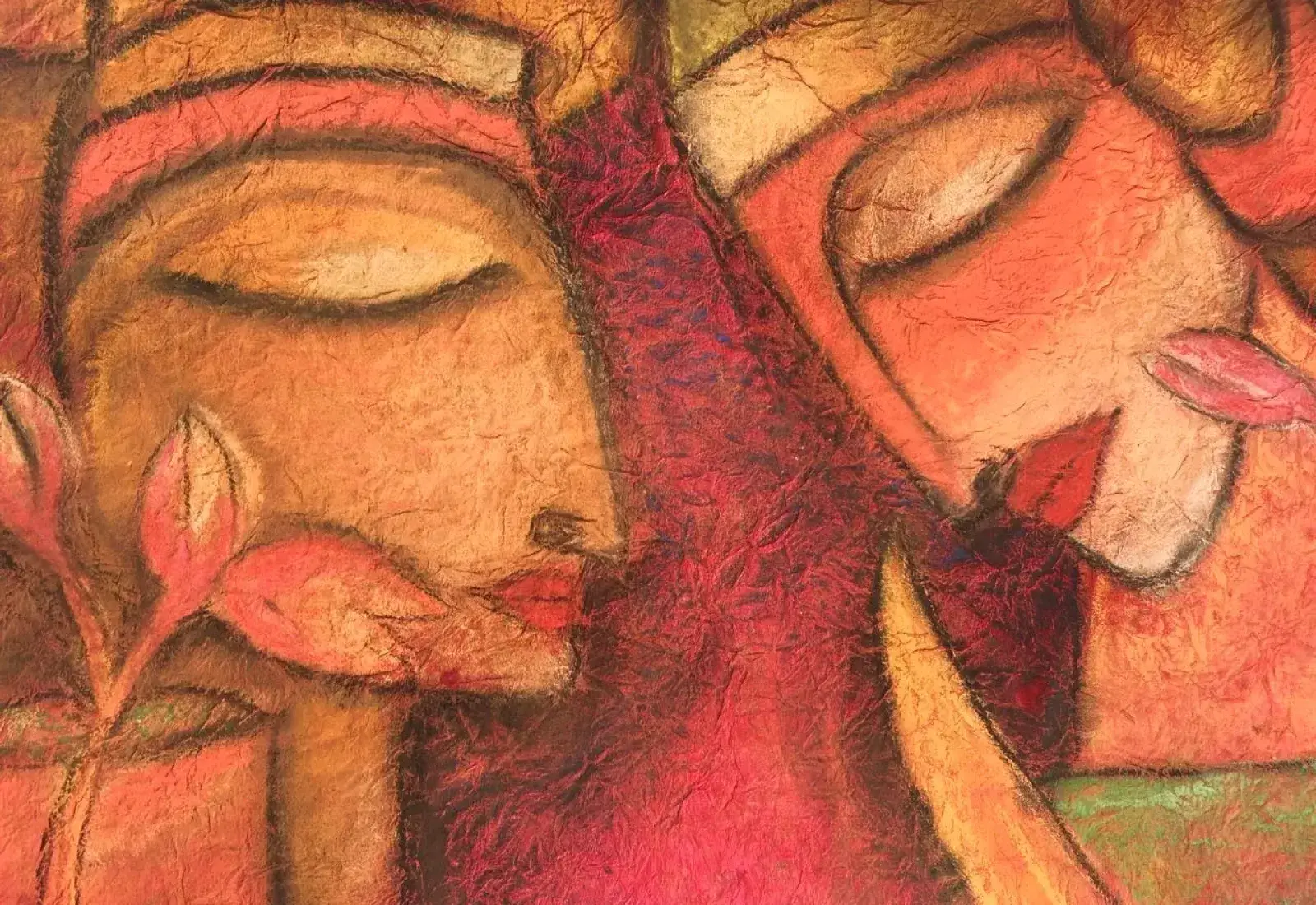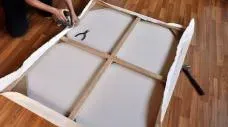Best Tips for Learning How to Paint for Beginners
Colors have an amazing effect on our psyche. And if you can bring them on the canvas in the form of a painting - it’s the most empowering and impactful way to express yourself. It helps you to express your dreams, emotions, and vision.
Painting is also one of the most tranquilizing activities one can indulge in. However, most of us would rather reach out to our music playlist instead of grabbing the paintbrush.
Painting is often considered a serious activity meant only for people who are trained in it. A bit of an enigma about art in general and a bit of inhibition in the minds of aspiring artists might be the reason behind it.
There are many of us who hold ourselves back from painting thinking that the outcome might be disastrous. People might make fun of it. If you fall into the same category - read this article to the end.
In this article, we are going to understand tips to learn painting step by step. But, don’t think that we are going to give you an easy-to-follow flow of actions on how to choose a canvas or hold the paintbrush and make strokes on the canvas.
Here we are going to talk about how to get over the initial teething problems regarding painting. We will also discuss the different kinds of mediums and how to explore them one by one as you proceed in your learning curve.
So, the first thing first - Paint for Yourself
Art is first for your own self and then for others. Simply steer clear of the ‘what-will-they-say’ syndrome.
It is possible that when you take your first few strokes, you end up being completely perplexed. Even after you have completed your first painting, it may leave you heartbroken. Don’t stop. Pick up another color or a different shade of the same color. Just play with them.
Pick up the different brushes and just see how the varied thickness of the bristles gives different effects on the canvas.
Try colors on a dry canvas or alternately wet the canvas with plain water and then apply colors to it. Both applications will give you completely different outcomes.
The idea is to just play with the different painting tools.
Learning to create art is an incredible skill to acquire. It opens up your creativity and teaches how to give shape to your imagination on paper. Going forward it can open multiple career opportunities such as Interior Designing, Graphic Designing, Fashion Designing, and much more. So, you see - painting is worth all the ordeal! Go for it!
If you want to read how you can learn to merge your artistic skills with your fashion sense to make an impact on the apparel industry, read our blog - 5 Tips for How to Become a Fashion Designer.
Essential Painting Tools
Your painting tools are an extension of yourself. These apparently mundane and material objects like paintbrushes, pencils, blank papers, and all other things give you the power to create magic with colors. So start by knowing your painting tools -
Pencil

The first tool you reach out to for painting is a pencil. A pencil is used for sketching. It helps to etch out the outline and a basic demarcation before filling in the colors.
Pencils are categorized as per their shade which ranges from light to dark. The traditional pencils are marked as HB, 2B, 4B, 6B, and so on. Likewise, mechanical pencils are categorized as 9H (lightest) to 9B (darkest). Here, H stands for ‘Hardness’ and B stands for ‘Black’.
Brush

Just like pencils, brushes too, can be categorized according to the thickness and quality of their bristles. The different types of brushes include -
- Round brush - Blunt and pointed, round brushes are used for creating outlines and filling colors.
- Flat brush - Pointed on the sides, these are used to fill and well as create lines with the help of their edges.
- Filberts - A mix of round and flat blushes, filberts are used to create different strokes and lines.
- Fan - A splayed cluster of a flat brush with a round tip, this brush is used to soften the edges, create special effects, and blend.
- Wash brush - These are majorly used to fill colors for big-format painting.
Paint

There are several types of paints including watercolors, poster colors, oil colors, and acrylic colors among others for the artist to choose from. The selection of the paint depends on the type of art project and medium.
The first paint introduced to beginners is watercolors. They gradually explore the other paint types as they proceed in their learning curve.
Paper

Now that you have learned about brushes, pencils, and paints it is time to explore what you will paint on. Papers used for painting are as varied as any other painting tool.
The papers are segregated on the basis of thickness and texture. Remember that the paper has to be sturdy enough to withstand and uphold the application of water, colors, brush, and knife strokes. The entire piece of art will not only have to be created but also be preserved for the longest period of time.
The quality of the paper not only ensures the best outcome of the paint application but also decides the life of the art.
The selection of papers primarily depends on the type of pencil, paint, and other tools that will be used on it.
The types of paper can be as varied as drawing paper, sketching paper, watercolor paper, and paper used for mixed media.
Palette
It is used for holding and mixing the paints. The artists usually hold the palette in one hand and the brush in the other. The hand with the palette remains fixed and the hand with the brush keeps moving between the paper/ canvas and the palette.
Palette Knives
These are used to mix colors on the palette and also for applying colors on the paper.
Digital Tools
Having explored the traditional tools, now it is time to explore the new-age painting tools. There are software tools that help to graphically edit the art piece.
Choose your Paint Medium
While there are several painting mediums, six basic mediums include watercolor, oil paint, acrylic paint, encaustic, tempera, and fresco. Out of these the most popular ones that are attempted by beginners and intermediate-level students are -
Watercolor

It is the first medium that learners are introduced to after they have tried their hands at crayons and oil pastels. Oil pastels and crayons are directly rubbed on the surface to fill, shade, and outline whereas watercolors are used with the help of brush and water.
Watercolors are pigments that are set with the help of some kind of adhesive binder. They are set in the shape of bricks or cakes in molds set in boxes. The colors are used with the help of wet brushes by absolute beginners who are newly getting initiated to painting with brushes.
However, having said that it does not mean that watercolors are only for newbies. The origin of watercolor paintings goes back to the Paleolithic era in Europe. It found prominence during the middle ages for illustrating decorative designs and sceneries.
Some eminent artists who created timeless art pieces using watercolors include European artist Albrecht Durer, an acclaimed poet and watercolor artist - William Blake, J.M.W. Turner, and Elizabeth Murray, among others.
The other water-based color is poster color. The difference between the two color types lies in their opacity after drying. Watercolors are more transparent as compared to poster colors.
There are a lot more interesting facts about how watercolor paintings originated and evolved. And most importantly there is an ocean of knowledge to acquire on how to learn watercolor painting. And a good place to start is to join a painting class.
Oil Paint

Leonardo da Vinci, Pablo Picasso, Vincent van Gogh - You just name them! They have all used oil paints as their medium for the timeless art pieces they have created.
Oil paints are made of dry pigments mixed with an oil base. In most cases, it is linseed oil. It takes time to dry. Oil paint is applied with the help of brush and pallet knives. It is diluted with the help of turpentine oil to control its consistency, transparency, and opacity.
Acrylic Paint

A quick-dry paint medium created by mixing the pigment with an acrylic polymer emulsifier and other plasticizers. These paints are water-based but become water-resistant after drying.
The new and practicing artist who wants to learn how to paint with acrylics has to understand the medium in terms of its viscosity, texture, and how it behaves on the different surfaces it is used.
To name a few notable artists - Darien Bogart, Andy Warhol, Helen Frankenthaler, and Timothy Mulligan to name a few.
Understand the relation of light to an object
A good understanding of how light portrays an object helps to create realistic paintings. It helps the artist to understand the dimensions and texture of a three-dimensional object. Accordingly, the artist recreates the image on a two-dimensional surface.
In the very preliminary art classes, students are asked to recreate a round object for example a real apple or an orange. The object is kept on a table and is exposed to light from one side. The side exposed to light is partly kept blank and partly shared with lighter pigment.
Different mediums use different methods to detail the dimensions and textures in an art project. For example, while painting with watercolors, the illusion of light is recreated by keeping it blank, and a translucent effect is created merely with the use of water.
Last but not least…
All the above points on how to break the ice with painting are extremely significant. But there is a lot more to learn which can only happen if you can learn under the supervision of an able and experienced teacher.
If you are not able to find a good teacher close to your residence, don’t worry. You can join a painting course online. Earlier people were skeptical about how to learn to paint online. But now there are so many online courses that are as effective as offline courses.
So fret not! Explore online hobby learning platforms that offer live individual online painting classes with experienced teachers. You are sure to open up a treasure trove of knowledge that will help you to explore your hidden skills and potential like never before.














